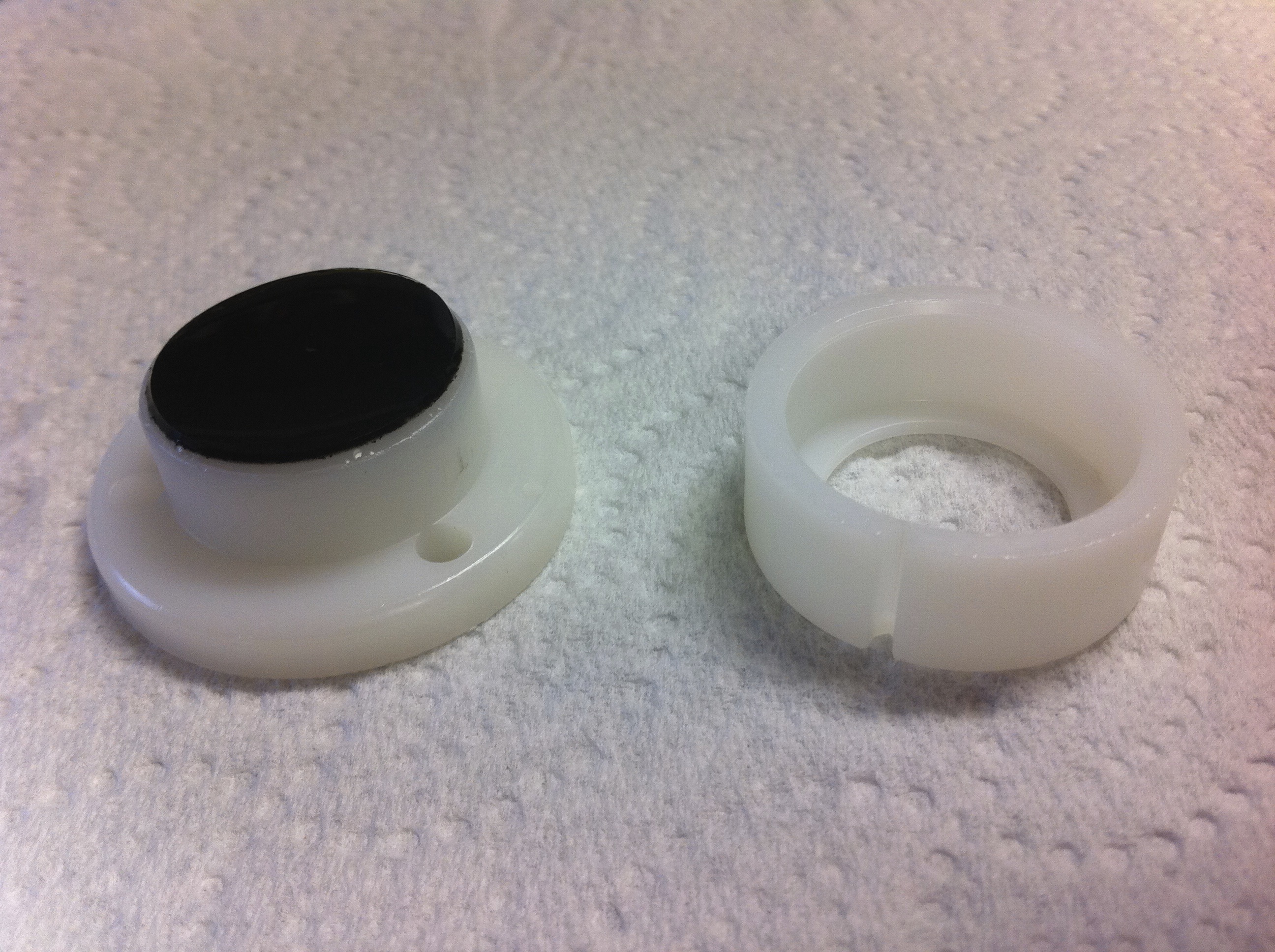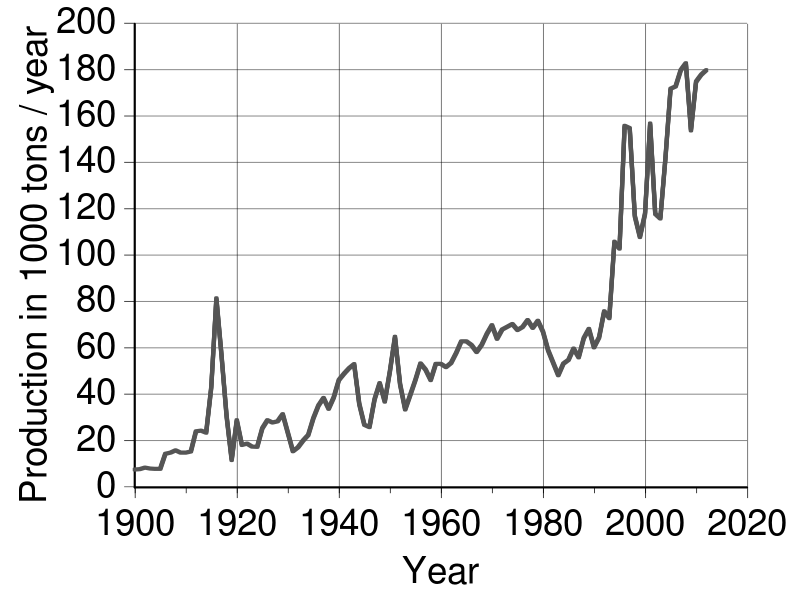
A photo of a disassembled DGT device, showing piston and cap. The device in this picture has been fitted with activated carbon for assimilating gold and/or bisphenols.
Researchers at Griffith University in Australia have developed a new diffusive gradients in thin films (DGT) method to determine the concentration of antimony in polluted waters. This new technique also allows them to measure in situ the speciation of this metalloid in its different oxidation states. Speciation could be carried out before using solid phase extraction (SPE) cartridges, but these present some limitations when it comes to analysing some complex mixtures like seawater.
On the other hand, DGT is a sampling technique that can be used to measure a myriad of analytes in different mixtures. DGT uses a combination of hydrogel-based layers to extract and retain the analyte, that can be eluted and determined later on. This technique has been used to measure trace metals, metalloids, sulphides, phosphates and ammonium. In this case, to enhance the affinity of DGT membranes to antimony, researchers have used thiol-based silica gel layers.
In this paper, the authors present a combination of methods that, ultimately, allows them to calculate the speciation of Sb(III) and Sb(V). The first method is used to determine the total amount of antimony in solution. This method, based on a Metsorb-DGT technique, was originally described in the literature for measuring Sb(V). The team demonstrated that it was equally effective absorbing Sb(III), which allows to determine the total amount of this metalloid. The second method presents a high selectivity of Sb(III) over Sb(V) using a new binding layer featuring a 3-mercaptopropyl functionalized silica gel. Subtracting both measurements, researchers can easily determine amounts of the different oxidation states.

World production trend of antimony (US Geological Survey, Wikimedia).
Antimony is a dangerous and toxic pollutant listed as a priority by the US Environmental Protection Agency. The production of this metalloid, mostly used in flame retardants and lead-acid batteries has grown over the last century, inevitably leading to pollution of the environment. Developing new methods to quantify antimony is always interesting to understand its behaviour and the biogeochemical processes it follows. The DGT method presented in this paper can measure antimony in situ, avoiding common issues (mostly speciation changes) of off-site analyses. Moreover, it has been proven to have an appropriate capacity to measure antimony even in highly polluted areas. Finally, these new methods have been tested in a wide range of pH, ionic strengths, and also in artificial seawater, proving the superiority of DGT over SPE in the determination of antimony in complex samples.
To read the full article for free* click the link below:
In situ speciation of dissolved inorganic antimony in surface waters and sediment porewaters: development of a thiol-based diffusive gradients in thin films technique for Sb(III).
W. W. Bennett, M. Arsic, D. T. Welsh, and P. R. Teasdale.
Environ. Sci.: Processes Impacts, 2016, Advance Article
DOI: 10.1039/C6EM00189K
—————-
Fernando Gomollón-Bel is a PhD Student at the ISQCH (CSIC–University of Zaragoza). His research focuses on asymmetric organic synthesis using sugars as chiral-pool starting materials towards the production of fungical transglycosidase inhibitors.
—————-
*Access is free until 29/07/2016 through a registered publishing personal account.











